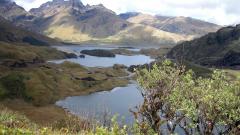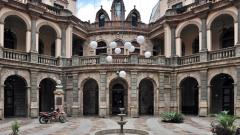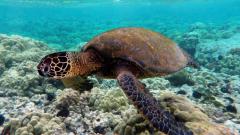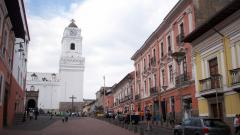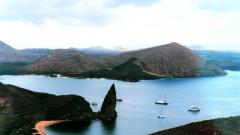 travel to Ecuador
travel to Ecuador
GENERAL CHARACTERISTICS
Ecuador, officially called the Republic of Ecuador, is bordered on the north by Colombia, on the south and east by Peru, and on the west by the Pacific Ocean, which separates it from the Galapagos Islands.
Andes Mountain range divides the territory from north to south.
Ecuador has an area of 281.341 km², being the tenth most populous country in America, slightly exceeding 16 million inhabitants.
Its capital is Quito, although its most populated city is Guayaquil. The official language is Spanish, spoken by 99% of the population, along with thirteen other recognized indigenous languages, which have official application in their respective territories, the best known are the Kichwa and Shuar among others. Within the language we can find three main variants according to the geographical situation, coastal, Andean and Amazonian.
The legal tender in the country is the US dollar.
The climate of the country is very varied, with a tropical climate, the subtropical, the Mediterranean ... It is divided into two seasons, humid (winter), that take place from December to May, and dry (summer) from June to November, although the consequences change depending on each region, in general, on this period the winter will be warmer and rainier and in the dry season the temperatures will be cooler.
In Quito and the Galapagos Islands, we will have spring temperatures all year long. During the humid season. In the capital, you’ll have fresher environment decreasing to 0ºC, otherwise, Guayaquil has tropical climate reaching 40ºC during the summer season.
HISTORY
The country was part of the Inca empire, during the XV century, in that period the different Amerindian tribes learned to work ceramics and agriculture and to take advantage of the large number of plant species to feed themselves. On the other hand, the Maltese tribes that occupied the coast, developed thanks to the crafts trade.
Ecuador remained an Inca region until the arrival of the Spanish conquistadors, at the beginning of the XVI century, when it took the name of Audiencia de Quito. During the period of Spanish control, it was attached to the Viceroyalty of Peru, as well as Nueva Granada’s.
In 1822 the country achieved independence from Spain after defeating the troops of that army and joined the Gran Colombia, until 1830 when it was declared an independent country by the hand of General Juan José Flores, hero of the Ecuadorian revolution that was proclaimed the first Republic President.
TOURISM
It begins its development in this matter in 1992 with the creation of the Ministry of Information and Tourism that since then seeks to reinforce and promote this activity. It stands out unquestionably for its large amount of natural resources, in 2016 it was awarded as the leading green destination in South America.
Through its slogan "Ecuador loves life" it has managed to boost tourism around nature while respecting the environment. It has around twenty-six protected areas and is one of the countries with the greatest biodiversity worldwide. We will highlight the Yasuní National Park, named Natural Reserve of the Biosphere by UNESCO in 1989, where extraordinary biodiversity indexes have been recorded, having found more than 2000 species among fauna and flora. Another of its notable protected areas is the Sangay National Park, also listed by UNESCO as Natural Heritage, since it contains more than 300 lagoons and it is also a member of the volcano route, because it contains within its limits three fantastic craters viewable after a walk.
We cannot forget about the Podocarpus National Park, which is considered the national botanical garden because it contains between 3,000 and 4,000 species of plants. In addition to this, the park possesses the biggest reserve of romerillos, the only endemic plant in the country and whose scientific denomination has been used for the name of the park. It also has more than 800 species of birds and some specimens of other animals in danger of extinction.
Inside these and the other parks we can do a large number of related activities such as hiking, kayaking, sighting of fauna and flora, cycling, climbing, or camping.
In regards to Cultural tourism, although it enjoys less visibility, is present in the Republic, thanks to enclaves such as Quito historic center that is the largest and best preserved in America. It was declared a Cultural Heritage by UNESCO in 1978. After a few years of neglect and abandonment conjoined to an earthquake, the rehabilitation work promulgated by the government has managed a complete revitalization of the place. In th present, we can walk through the Independence Square, enjoy a multitude of cultural buildings, mainly of a religious nature (Basílica of the Nacional vow and Metropolitan Cathedral) and civil (Presidential Palace and Palacio de Pizarro). There are countless green areas, museums and commercial establishments that had an important role on Quito's leisure.
To the north of Quito in the province of Pichincha, we find the monument “Mitad del Mundo”, half of the World, finished in 1982, to commemorate the exact location of the equator, which was discovered after a Franco-Spanish mission in the eighteenth century.
Another important tourist point is Guayaquil, the most economically developed city on a national level and with numerous options for tourists, who can enjoy its natural parks and gardens (Malecón Gardens or Botanical Garden), its Historical Heritage, theaters and monuments (Iglesia de la Merced or Teatro Eloy Alfaro), leisure and recreational areas (Pearl's Ferris Wheel or Artisan Market) and facilities for business tourism (Cristal Palace or Simón Bolívar Convention Center).
Its last internationally known destination is the Galapagos Islands, a group of islands known for their exalted marine and floral biodiversity that earned them recognition as a World Heritage Site by UNESCO. You can see giant turtles, dolphins, sea lions among many other species. On the island, you can do various aquatic activities such as cruises, diving, snorkeling ... In addition, on the archipelago, cradle of the Theory of Evolution, you’ll enjoy of an enviable volcanic set. All these characteristics combined with a benevolent climate, give this destination reference position on the touristic industry.
After this information, it can be asserted that Ecuador is a rising destination and since the end of last century has been able to take advantage of its fantastic natural environment to make it its strong point and show it to the traveler in a friendly way. Its superb landscapes, the friendliness of its people and a great colonial heritage make it the ideal destination for a new experience.
practical information
useful information before leaving
Language
Religion
Political regime
Currency
Warnings
Documentation
Vaccines
recommendations
Recommendations before traveling to Ecuador
- Due to the climatic diversity, the best time to visit the country will depend on our region of destination, if we visit the Andes it is recommended to travel from June to September since, although the temperatures are lower, the probability of rain is minor. To enjoy the east of the country it is advisable to go between August and October to avoid the rainfall time, the area is more forested we will have to endure a suffocating heat all year round; To visit the Pacific coast we can distinguish between dry season and rainy season.
- In the first one we will have cooler temperatures and cloudy skies, but it is the time when the whales and dolphins arrive on the coast. Meanwhile in the second one, we will enjoy, paradoxically, a warmer climate so it will be the ideal time to practice sun and beach tourism and rest. If we go to the Galapagos Islands we recommend visiting them from December to May, although we find ourselves with constant rains, they are light so we can do the itineraries of the island and avoid the suffocating heat during the dry season.
- There have been cases of diseases such as zika, dengue chikungunya, leishmaniasis and malaria, especially in coastal areas for its prevention is recommended to wear long-sleeved clothing and use anti mosquito repellent.
- Hospitals in the main cities have adequate sanitary level and equipment, but not those of small towns.
- It is not recommended to eat fresh food or food from market stalls, you should also restrict the consumption of fresh water, you should drink it bottled or after boiling to avoid gastrointestinal problems.
- During recent years there has been an increase in insecurity in the country, especially in the large cities, urban centers and cities bordering Colombia, therefore, it is recommended to monitor their most valuable items and documentation and not doing ostentation of wealth.
- You can be scammed in the purchase of jewelry or antiques. Also, you have to be careful doing the economic transactions because there is a traffic of fake dollars. For this reason, most of the stores do not accept high value notes so it will be advisable to carry your cash in small fares, equal to or less than $20.
- The country has a high index of seismic activity, so it is recommended to visit the web site of the civil protection system (http://www.igepn.edu.ec/) to have seismic information and possible floods updated.
- If you have to take a taxi, it is recommended to do it from the reception of your accommodation or using mobile apps, if you take it on public roads, it must be yellow and have an orange license plate. In addition to a registration number on the doors, security camera and emergency button.
- The prefix of the country for international call is +593, The emergency telephone number of the Police is 101.
- In the provinces of Pichincha (Quito), Imbabura (Ibarra, Otavalo), Azuay (Cuenca) and Esmeraldas, there is the Municipal Tourist Police, in which, you can ask for help to move through the main tourist itineraries.
- If you wish to visit the Galapagos Islands, you must acquire the Transit Control Card for a visit of less than ninety days. It is available at the airports of Quito and Guayaquil.
- In Ecuador the common voltage is 120 V. The frequency is 60 Hz. You will need an adapter if your electronic devices are running at a different current.
- According to your country of origin, you will require an entry visa or not for stays in the country of less than 90 days. Which will be extendable only once for a period of the same extension. It will be mandatory for tourists to enter the territory of Ecuador, a passport with a minimum validity of SIX MONTHS from the date of arrival and in good condition. As of February 2018, it will be compulsory for all visitors to have a public or private health insurance equivalent to the duration of the stay in the country, in some cases it is also required to present a return ticket to the country of origin and the reason for your trip to Ecuador.
- It is advisable to visit this website of the interior ministry to obtain more accurate information to your case (https://goo.gl/JkwtzG).
regions of Ecuador
Know all the zones and cities that you can discover in your trip

